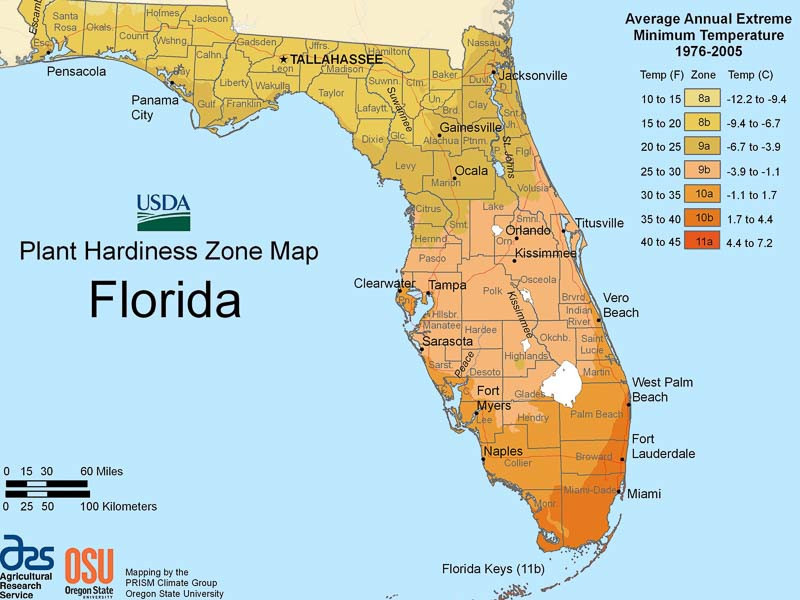About 25 percent of the plant species native to North America are at risk of extinction. You can help reverse this trend by planting great native plants in your garden.
Florida is divided into four main ecological regions: the East Gulf Coastal Plain, the South Atlantic Coastal Plain, Florida Peninsula, and Tropical Florida. Unique in topography, soil depth, pH, elevation, light, and hydrology, each region provides a rich variety of ecological habitats, supporting many native plant species.
Florida supports the fourth highest biodiversity in the United States and ranks third in the number of species listed as threatened or endangered by the U.S. Fish and Wildlife Service.
Noted for its mild climate, with temperatures typically ranging between 47-90ºF and relatively high rainfall, averaging 60 inches per year, Tropical Florida or South Florida is located in USDA zones 10a, 10b, and 11a.
Surrounded by the Gulf of Mexico to its west, the Atlantic Ocean to its east, and the Florida Straits to its south, South Florida is a landscape of great contrasts between upland terrestrial ecological communities and vast expanses of herbaceous wetlands.
Before men began extensive modifications, the South Florida ecosystem used to include freshwater and terrestrial systems such as ponds and sloughs, sawgrass marshes, wet prairies, hammock forests, bay heads, cypress forests, pine forests, mixed swamp forests, and dry prairies. It also included coastal systems such as bays, coral reefs, mangroves, saline marshes, and beaches and dunes.
Today, a large part of the vast wilderness has been cleared and converted to agricultural land or urban areas. 99% of the tropical hardwood-dominated forests (hammocks) are estimated to have been lost. It is estimated that greater than 98% of the Pine Rockland community, including (sub)populations of its highly endemic flora, have been destroyed.

According to the U.S. Forest Service, Invasive species have contributed to the decline of 42% of U.S. endangered and threatened species, and 18% of U.S. endangered or threatened species. Invasive species compete directly with native species for moisture, sunlight, nutrients, and space. They displace and alter native plant communities, degrade wildlife habitat and water quality, and potentially lead to increased soil erosion.
The federal government has estimated that nearly 25 percent of the 20,000 plant species native to North America are at risk of extinction, many of these through habitat loss. You can help reverse this trend by planting great native plants in your garden.
A plant is considered native if it has occurred naturally in a particular region or ecosystem without human introduction. There are many benefits to growing native plants.
Here is a list of native trees that are well-suited for plantings in sunny gardens of South Florida.
Huy Thoai,Shutterstock
| Hardiness |
10 - 11 |
|---|---|
| Plant Type | Trees |
| Exposure | Full Sun |
| Native Plants | Southeast, Florida |
Create a membership account to save your garden designs and to view them on any device.
Becoming a contributing member of Gardenia is easy and can be done in just a few minutes. If you provide us with your name, email address and the payment of a modest $25 annual membership fee, you will become a full member, enabling you to design and save up to 25 of your garden design ideas.
Join now and start creating your dream garden!
Create a membership account to save your garden designs and to view them on any device.
Becoming a contributing member of Gardenia is easy and can be done in just a few minutes. If you provide us with your name, email address and the payment of a modest $25 annual membership fee, you will become a full member, enabling you to design and save up to 25 of your garden design ideas.
Join now and start creating your dream garden!